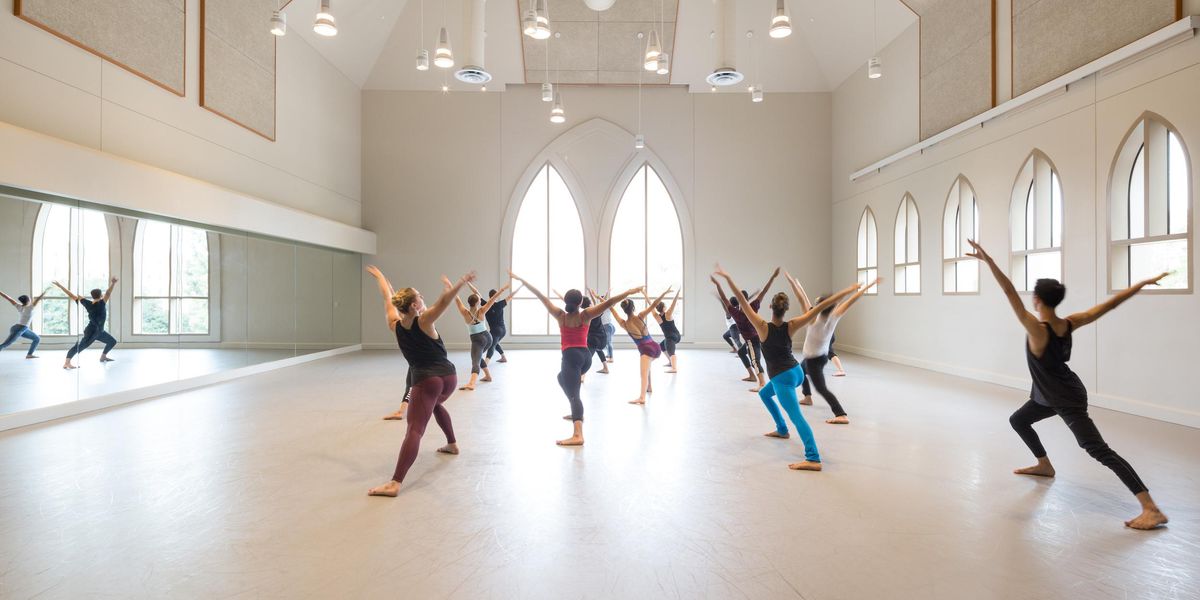On Broadway: Debuting, Finally
A Gentleman’s Guide to land Peggy Hickey’s choreography on Broadway.
Jefferson Mays and Ken Barnett trip the light fantastic in the Hartford Stage production.
Peggy Hickey’s choreographic resumé can make your head spin. Musicals in Kansas, Connecticut, and Mexico. Operas in Chicago, Seattle, and Hong Kong. Stagings for the New York and Los Angeles Philharmonics, and Monty Python. Movies, TV series, and soaps, even an award-winning music video. The only place missing is Broadway.
But when the new musical A Gentleman’s Guide to Love and Murder starts previewing this month, Hickey will finally get a Broadway debut—“a dream come true,” she says. Also, a dream long deferred.
A self-described “California girl,” she grew up primarily in Sacramento. But she started ballet at 4, at the Phyllis Cyr Dance Studio in Huntington Beach. Her breech birth had displaced a hip, and she’d had to wear shoes with a bar between them. “My parents put me in ballet so I would walk more naturally. They didn’t expect me to like it so much.”
When she was 7 or 8, they took her to a ballet version of Peter and the Wolf. “From that moment,” she says, “I knew what I wanted to do.” She had studied only ballet before arriving at Cal State University at Sacramento, where she studied jazz, tap, and modern. But her musical theater education began when she was still in high school, with summer jobs at Sacramento’s California Music Circus.
“I didn’t even know you did shows in a proscenium,” she laughs. “I thought they were always in a tent in 102 degrees.” Doing six musicals in seven weeks every summer through college provided a kind of choreographic boot camp: “Every week a new choreographer and a new style—we’d go from A Chorus Line to La Cage aux Folles to Fiddler on the Roof to Oklahoma.” After graduating, she returned to the tent not as a local hire but as “a union dancer with insurance and a living wage.” And that’s when the artistic director, Leland Ball told her, “You have a very logical mind—you should choreograph.”
“This was a new thought,” she says, “because I just wanted to dance.” But Ball made her his assistant and took her under his wing. “I was a good dancer,” she says, “but the minute I started choreographing it became clear what I did really well. The hardest part was killing the dancer in me. As a performer you have a whole different head-set: How do I look? How do I look? How do I look?”
Life seemed to be aiming her towards Broadway. But some 26 years ago, she auditioned for a dance job in Otello, the inaugural production of the Los Angeles Opera. “I was in the right place at the right time to get the show, and then be the dance captain, and then become an assistant. I was assigned to international directors like Franco Zeffirelli. It was way out of my league,” she says. “But I saw the opportunity and just attacked it.” As L.A. Opera grew, so did her opera career. And given her location, she got film and television work as well.
“But really, my heart is in musical theater,” she admits. “It’s thrilling to finally have a Broadway show, especially because I am a breast cancer survivor.” When director Darko Tresnjak, with whom she’d worked at the Old Globe in San Diego, asked her to choreograph Gentleman’s Guide, she took time off from radiation to do the workshop. “There was no way I was going to miss the culmination of 11 years of a relationship,” she says.
A sort of Sweeney Todd played for laughs, the show isn’t the ideal choreographic calling card. “Every blink of the eye and turn of the head is choreographed,” she says, “but it is not a dance show. It’s completely semi-dance.” But she’s in remission, and she and Tresnjak are making their Broadway debuts with a musical that’s already won raves in San Diego and Hartford. “We are so grateful,” she says.
Sylviane Gold writes on theater for
The New York Times.
UP TO SNUFF:
With no dancers in the cast and a globe-trotting choreographer who lives in L.A., A Gentleman’s Guide to Love and Murder presents something of a challenge when it comes to maintaining the highly stylized movement. Peggy Hickey relies on two surrogates. Mark Ledbetter, the show’s male cover, is dance captain—“the first line of defense.” Hickey’s longtime assistant, Adam Cates, lives in New York and provides any choreographic adjustments that may be required once she’s gone. They met when Hickey replaced an ailing choreographer at the last minute: “I inherited him,” she says. “He’s awesome.” —S. G.




